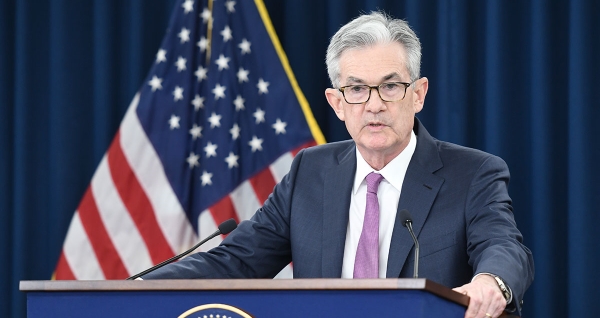Managed taper anticipated from September, wider EUR/USD XCCY
Persistent signs of a burgeoning US recovery over the summer could lead to the FOMC signalling its tapering strategy as early as the August Jackson Hole central bank symposium or the September policy meeting, according to Valentin Marinov, head of G10 FX research and strategy at Crédit Agricole CIB, with growing divergence between dollar and euro rates putting widening pressure on the cross-currency basis swap.

Although markets have reined in earlier expectations of Fed action since the March meeting, US CPI jumped to 4.2% in April and inflation figures are expected to continue to overshoot in the coming months. Marinov says this could prompt FOMC members to adopt a more hawkish stance at the September meetings, while bringing forward their expectations of future rate hikes from 2024 to 2023 as described in the so-called dot plot.
“By September, the Fed will have an updated set of forecasts with a sufficient number of data points on growth, inflation and labour markets to potentially conclude that less monetary stimulus is needed, and then proceed towards tapering by the end of Q1 next year,” he says.
However, he expects the process to play out differently to the “taper tantrum” in 2013 that preceded the announcement of tapering in December that year. Then, Treasury yields backed up ahead of the official announcement, before gradually falling over the next three years.
Marinov expects 10 year Treasury yields to head towards 2% in early 2022 from around 1.6% today, and remain around that level for some time.
“In the current conditions, the Fed will try to avoid taper tantrum as much as possible,” he says. “I expect some adjustment in rates, but I wouldn’t think it’s going to be as aggressive as what you’ve seen in the past, because since last August the Fed has adopted the average inflation targeting framework, which is by definition more dovish compared to their previous policy stance.
“They could announce that from January they are going to gradually cut the pace of purchases, but remain vigilant and maintain a fairly stable rates outlook, albeit with the new start of the tightening cycle in 2023.”
With Eurozone rates expected to be kept at “rock bottom”, such US developments could lead to a widening of the euro/dollar cross-currency basis swap, which has recently hit historic lows, according to Marinov (pictured), after it widened into March upon earlier inflation fears.

“Global liquidity conditions have warranted very tight spreads,” he says, “but growing divergence in the policy outlook will essentially mean that we could see a renewed rewidening of those spreads.”
Contributing to the recent retightening has been an overhang of liquidity deriving from a $1tr reduction in the Treasury General Account, announced in February, which has kept US money market rates depressed, according to Marinov. He expects the downward pressure exerted by this to ease once the reduction is completed this month.
Meanwhile, a successful extension to the debt ceiling next month and renewed spending by the Biden administration and Treasury borrowing could absorb more liquidity — with the Fed otherwise potentially acting to put a floor under money market rates, if necessary, by hiking the interest rate on excess reserves or signalling a willingness to increase the repo rate, for example.
Higher Treasury yields could also encourage greater foreign demand, which Marinov notes has remained below recent highs despite the return on hedged purchases having improved significantly for Eurozone and Japanese investors this year. The very tight euro/dollar cross-currency basis swap spread at present may nevertheless partly reflect growing demand for short-dollar hedges by Eurozone investors in Treasuries. That said, a potential bear flattening of the Treasury yield curve in the wake of the QE taper announcement could make a significant increase in the demand for short-dollar hedges less likely in the coming months.
Meanwhile, tighter funding conditions in the US could encourage renewed reverse Yankee issuance from US corporates and this could boost demand for dollars in the forward market.
While such factors will put widening pressure on the euro/dollar cross-currency basis swap, Marinov sees potential pressure in the opposite direction from Eurozone corporates selling dollar forwards and buying euro forwards, particularly as the global economy recovers from the pandemic and their export revenues increase — even if this activity has recently come in well below expectations in the first months of the region’s recovery.
